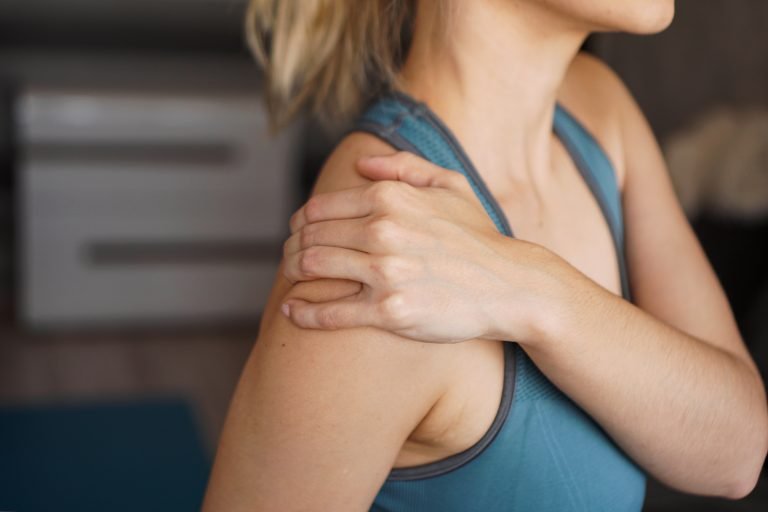
Frozen Shoulder - What is it?
Frozen shoulder is known as adhesive capsulitis a limiting condition of the shoulder where the patient exhibits restriction and pain on movement particularly in both external and internal rotation.
All Xray examination is normal. This is basically how a diagnosis of frozen shoulder is made, pain and restriction in a shoulder with normal Xray result.
Around 2 – 5% of the population can suffer from this condition it is more prevalent in diabetics, and a family history association as well as people low in thyroid hormone. It may also be related to previous trauma although there is no single study that can categorically support this.
Essentially frozen shoulder has three phases the frozen/pain, freezing/stiffness and thawing/recovery period. It can take up to thirty months for a frozen shoulder to recover and in some unlucky people restriction can last up to seven years!
Freedom of Movement: The Common Findings of Frozen Shoulder
The main findings in frozen shoulder are an increase in neovascularity meaning an infiltration of new blood vessels. The joint capsule (the loose fold insulating the shoulder joint) contracts in the front causing the restrictions people often feel in the front of the shoulder. The capsule during the process actually decreases in size, which in turn leads to the contraction.
Frozen Shoulder can be subdivided into the three phases.
The frozen/ pain phase.
This is where communication is important as a perfectly viable option is “supervised neglect” in other words just wait and after 30 months or so the frozen shoulder should have recovered. Most people though are not willing to wait this long , but it remains a viable option!
Freezing Stiffness And Thawing
This is the phase where the pain goes, but the patient is left with gross ristriction in the arm, unable to lift it above their head, rotationg arm is especially difficult, and life at this stage has not returned to nomal. The good news is that the pain has subsided, the bad is you cant move your arm much.
Recovery Phase
The recovery phase is the phase where with active rehabilitation the arm slowly recovers and mobility slowly returns to normal.
Frozen Shoulder What Can Be Done?
Treatment Plans Can Be Subdivided:
The frozen/ pain phase. This is where communication is important as a perfectly viable option is “supervised neglect” in other words just wait and after 30 months or so the frozen shoulder should have recovered. Most people though are not willing to wait this long , but it remains a viable option!
Heat and stretching has been researched and is found to be superior to just heat
To Start With The Conventional Approach
Hydodistension
This is where saline or salt solution is injected within the joint capsule to help expand it and this along with manipulative treatment afterwards is shown to be effective.
Steroid injections
have been shown to have some effect in reducing pain
Manipulation under anaesthetic
Although performed is not done as readily as before as there is little evidence this is more helpful that manipulative treatment and has the disadvantage of having complication rates of tearing tendons , and in some cases even fracturing the shoulder joint.
Where Does Osteopathy and Acupuncture fit in?
Osteopathy and Acupuncture can be fitted into to all three stages. There is evidence both empirical and clinical that this combination of Osteopathy and Acupuncture is effective and both reducing pain and helps reduce shoulder restriction.
Because of the adhesions it should be stated that it can take time to relieve symptoms but in my experience both Osteopathy and Acupuncture usually outperforms other treatments for this debilitating condition.
Acupuncture is helpful in reducing pain and helping to settle the shoulder down whereas the Osteopathic approach can be utilized in returning mobility.
Certainly if you wish to reduce the time taken to recover from frozen shoulder then do give a call and see what can be done to help your condition.
References for Frozen Shoulder:
1. A study of Pathological Findings of the Shoulder
Exercises That Can Be Used For Frozen Shoulder
Please ask before embarking on an exercise program. Going too fast and doing the wrong exercises may end up making you worse!
General Mobility
This is good for any general shoulder restriction eg frozen shoulder
Stretch Shoulder Joint
Good For a restricted shoulder
Walking Hand up Wall
Use this is very difficult to move arm/shoulder
Flag Waving
A good rehabilitation exercise to help improve movement
Internal and External rotation of shoulder





